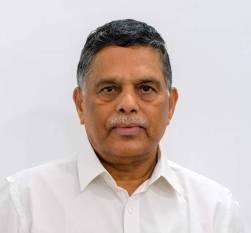Scaling up exports, adopting sustainable practices key for further growth
THIRUVANANTHAPURAM, 24 October 2024: Noting that the cooperative model has immensely contributed to India’s rise as the world’s largest milk producer, Milma Chairman K S Mani made a strong pitch at the World Dairy Summit in Paris for adoption of sustainable and smart practices to turn the global challenges faced by the dairy sector into opportunities.
Shri Mani, who is also Director of National Cooperative Dairy Federation of India (NCDFI), was the sole representative of Indian dairy farmers at the October 15-18 summit organized by International Dairy Federation (IDF).
National Dairy Development Board (NDDB) Chairman Shri Meenesh C Shah was among those who represented India at the summit which assumed a strategic significance considering critical challenges faced by the dairy sector world over including climate change, rising raw material costs and depletion of natural resources.
Speaking on Indian Dairy Scenario at the Farmers’ Round Table on Oct 14 ahead of the October 15 -18 summit, Shri Mani, said the country’s dairy sector promised vast export potential, especially for value-added products.
While new farms in India may face some challenges arising from issues like climate change, the vast domestic market and export potential present significant opportunities for further growth and success, he said.
Export of value-added dairy products needs to be ramped up by tapping into the government programmes like the Dairy processing and Infrastructure Development Fund (DIDF) and reaching out to new markets like Southeast Asia, the Middle East and Latin America, he added.
Labour shortages and technology solutions; Climate Change and Sustainability and Opportunities and Challenges in the dairy sector, were among the core themes of conversations at the meet, which saw the convergence of stakeholders of dairy sector from around the world.
Though labour shortage is not as big a problem in India compared to the developed countries, it is important to attract younger farmers and skilled workers to maintain the growth, Shri Mani, the Chairman of Kerala Cooperative Milk Marketing Federation (KCMMF) said.
Smallholders in India, who account for nearly 80 per cent of the country’s dairy sector, have already started adopting automation and digital tools to reduce labour demands, Mani said.
Although climate change posed challenges to Indian dairy sector too, smallholder farmers have started adopting sustainable practices to address this issue while continuing to support rural livelihood.
“India’s cattle feeding system is notably sustainable as it primarily utilises agricultural residues. By converting these materials, which otherwise go to waste, the system enhances resource efficiency and minimise waste”, said Shri Mani, who has vast hands-on experience as a farmer, entrepreneur and cooperator.
The cooperative model actively pursued by India, which prioritises the wellbeing of farmers, has contributed substantially for the country’s emergence as the world’s largest milk producer and consumer, he said.
With a livestock population of 536.76 million animals, India’s milk output now stands at 231 million metric tonnes a year, accounting for 24-25 per cent of global production. India’s per capita milk availability of 459 grams per day exceeds the world average of 322 grams a day, highlighting the efficiency of the small-holder driven dairy system.
“Indian dairy sector presents a unique and striking contrast to the dairy industries of developed nations, where large-scale commercial operations and profit-driven enterprises dominate. In India, the dairy sector is a critical source of livelihood for millions, embodying a model of inclusive growth and community empowerment,” pointed out Mani, a lifelong advocate of the dairy cooperative movement.
With 28 State Milk Federations and 240 district cooperative unions, the cooperative model in India’s dairy sector ensures that small farmers receive fair prices for their milk, eliminating exploitation and empowering sustainable growth. This approach has resulted in a 6% annual growth in milk production over the past decade, significantly surpassing the global rate of around 2 per cent.
“Our cooperative network reaches 230,000 villages, directly involving 80 million farmers and ensuring equitable income distribution. Women play a significant role in India’s dairy sector, with 35?tively engaged in cooperatives. There are 48,000 women-led dairy cooperatives at the village level, empowering women with financial independence and strengthening rural development” he pointed out.
“Our presentation on Indian Dairy Scenario, with its emphasis on cooperative networking of farmers and sustainable practices exemplifying a human-centred and livelihood-driven model, has been greatly appreciated by the delegates at the summit,” Mani said.
Industry stakeholders, farmers representatives, senior officials and representatives of dairy development agencies from across the world attended the meet.























